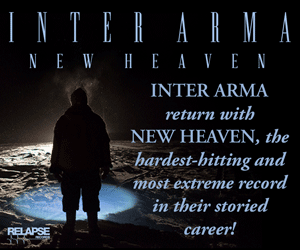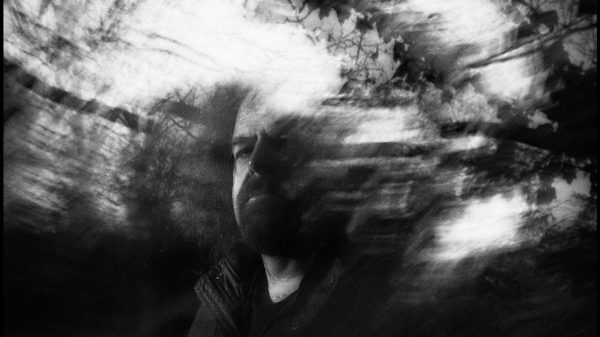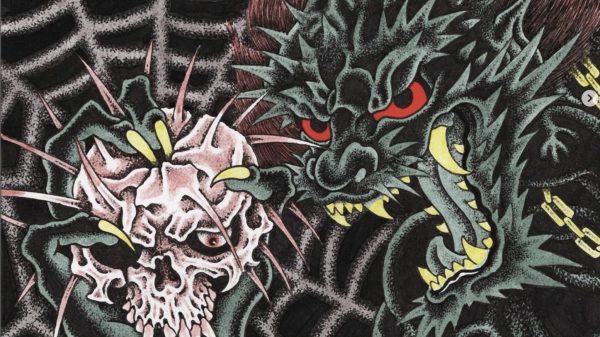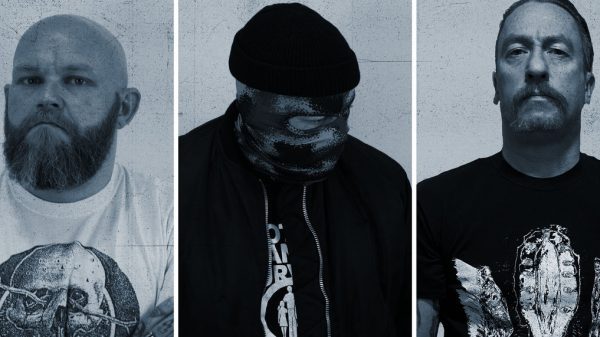Grindcore didn’t start in the 90s but it does seem that the genre evolved more or less into its current identities during that decade, a decade overflowing with classic records. I heard my first grindcore record in 1990, so I feel that even though I had missed the initial classic records from bands like Napalm Death, Terrorizer, and Siege, I nevertheless got to witness grind grow up.
In 1990, I was a dedicated thrasher and metalhead, watching Headbangers Ball every Saturday night and recording it so I could watch my favorites again throughout the following week. In one episode, surely towards the end, they played Napalm Death’s “Suffer the Children.” I don’t think I wanted to like it at first, Barney Greenway’s distinctive death bellow sounded too over the top even though that’s what everyone else said about all the bands I already loved. Yet, I returned to that video recording over and over, that breakdown in the song was like an opiate and my fifteen-year-old self was hooked.
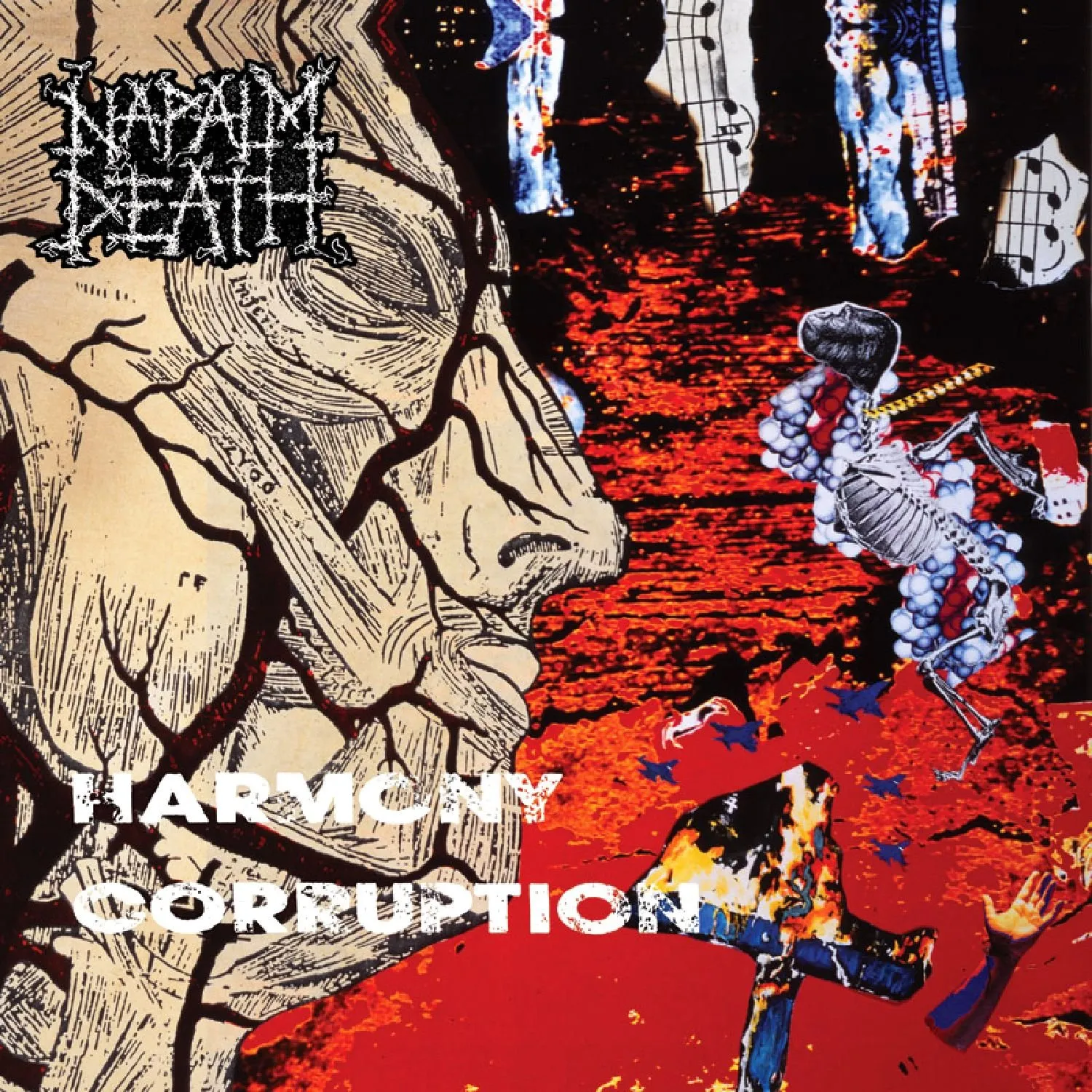
At school the next week, I must’ve talked about it to this dude who sat next to me in study hall. Mostly he just slept, pressing his thumbs into his temples which he said helped him fall asleep quicker. Before he passed out one day we must’ve been talking music and knowing he thought all my favorite thrash bands were lame I must have mentioned “Suffer the Children.” Unexpectedly, the next day he showed up with a dubbed cassette for me, Obituary’s Slowly We Rot on Side A, and Napalm Death’s Harmony Corruption on Side B. Corruption is the right word. My musical journey took a turn towards the dark side. Within a couple of years, my first death metal band started playing shows and we often played with a punk band fronted by my study hall companion.
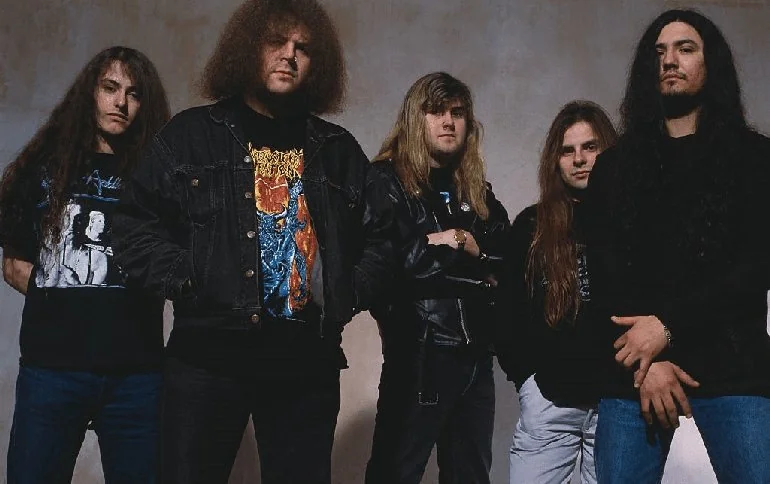
Napalm Death has always played a vital role in grindcore, and Harmony Corruption shaped the direction of the genre. It was a divisive record, far more refined than they had done before, but it sounded like glorious chaos to me. I always thought grindcore straddled the line between the deep underground, D.I.Y. scene and the more metal-oriented, slightly more popular, and well-produced grindcore put out by bigger indie labels like Relapse and Earache. I love both styles and Napalm seemed to inspire the former with Scum and the latter with Harmony Corruption.
Admittedly, outside of Napalm, I had a lot more death metal records as opposed to grindcore in the early 90’s. They were easier to come by in my high school years. Carcass had already moved firmly into the death metal camp by the time the decade started, and like I said, it would be a couple of years before I acquired a lot of those vital ’80s records. I did grab almost all the Napalm Death releases I could find though. The compilation cassette Death By Manipulation was probably my favorite.
A funny sidebar about Carcass though. I am aware of at least two instances of bands around this time where two members almost came to blows arguing whether Carcass was grindcore or death metal. These two stories happened states apart and these bands definitely didn’t know each other but I bet similar stories occurred all over the place. Obviously, it ain’t that deep, but I do admit that when I was first exposed to grindcore and death metal, I didn’t know the difference.
Brutal Truth’s Extreme Conditions Demand Extreme Responses was the next grindcore record to grab my attention. Released in 1992, the beginning of my senior year of high school, they were the first group to make me appreciate speed for speed’s sake. Sure, Napalm was fast but this record was insane. In many ways, Brutal Truth felt like America’s answer to Napalm Death, the dominant grindcore band on the continent.
I started college in the fall of 1993 in Bloomington, Indiana, and the new environment gave me the opportunity to discover so much more music. On the bigger label side of things, Earache put out the second Brutal Truth full-length, 1994’s Need to Control. While still a thoroughly unhinged record, Brutal Truth sounded like absolute masters of their craft and also revealed a more prominent industrial metal influence as well. Many consider this their masterpiece, although I honestly can’t decide between this and their debut.
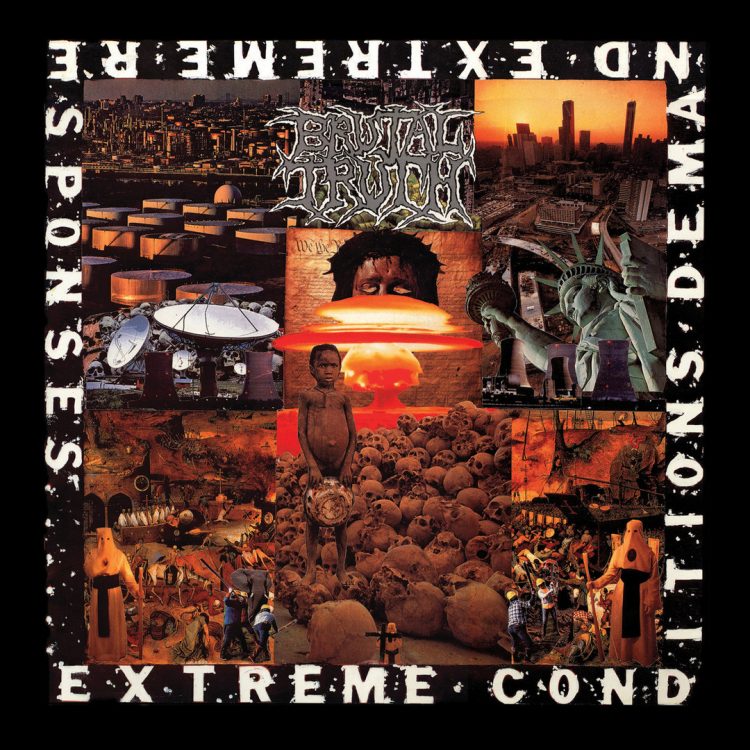
Also released in 1994 by Relapse Records, Exit-13’s Ethos Musick was a big record in my scene. I had it on cassette but didn’t often listen to it except at parties. There was something about those huge sludge parts and the general tongue-in-cheek attitude of that record that seemed to work when everyone was drunk and stoned out of their minds. All the blues and jazz breaks slamming into all-out blast beats captured a certain manic energy. When “Open Season (The Story of Hunter Slaughter)” kicked in, living room circle pits started and things got broken.
When Sean asked me to write a 90s grind retrospective, but from a personal perspective, I knew there were a few unusual albums I had to include. In this same period, I was becoming a jazz obsessive, so anywhere I could find overlap was important to me. John Zorn’s Painkiller is a jazz trio playing grindcore, or maybe it’s the other way around. Their Buried Secrets album is insane and I was obsessed with it. Featuring Napalm Death’s Mick Harris on drums and vocals, Bill Laswell on bass, and Zorn’s paint-peeling saxophone this record is chock full of blast-beat jazz nihilism. Zorn’s Naked City project provides the same avant-abrasiveness, only with a larger ensemble and more musical styles being subverted. Finally, Bill Laswell’s Praxis project managed to put Mick Harris in the same group as Parliament/Funkadelic members Bootsy Collins and Bernie Worrell, along with a cast of many other unusual suspects. While much of Praxis is a mix of mutant funk and dub, 1993’s Sacrifist starts with a minute and a half of absolutely insane death-grind.
The other thing that began to happen with my relationship with grindcore in this period was the discovery of more underground, D.I.Y. and punk-adjacent takes on the genre. As my death metal band morphed into a more experimental hardcore band, our new vocalist and future roommate Dave Britts (Racebannon, Coffinworm) introduced me to a slew of new bands.
He made me a cassette of Destroy’s Necropolis(1995) and Plutocracy tracks that stayed in constant rotation. I worked in a college textbook warehouse for a while and listened to this tape over and over. I love these bands to this day and if you have a punk bone in your body, you need to check these bands out. He also had a mixtape of tracks of Austalia’s Rupture that seemed pretty vital at the time. They mixed an almost Oi sound to their grind that set them apart. I know at least some of those songs were on the Sex, Drugs, and Rupture release from 1995.
He also introduced me to the power violence scene, although it was a few years older at this point. Crossed Out was active from roughly 1991 to 1993 and represented the subgenre perfectly. Insane blasting contrasted with more grooved-out sections, all done with a punk rocker’s conviction and rage. Their small discography, consisting of roughly forty-five minutes of material is essential. Those that get it, get it.
The same can be said of No Comment. Also from California, their Downsided Ep from 1992 is an essential piece of power violence and grindcore history. There’s a looseness to these bands that betrays their almost virtuosic performances. I often felt like death metal bands strove for the technical perfection of classical music, while the grindcore scene had more in common with the in-the-pocket feel of jazz and r&b. They were probably breaking all the music theory rules but this shit hit you in your body and soul.
While Brutal Truth might have had a larger audience in this period, they certainly kept pushing the genre forward. With 1996’s Kill, Trend, Suicide EP and 1997’s Sounds of the Animal Kingdom, they found a more technical and dizzying approach that nevertheless felt aligned with the genre. You didn’t so much bang your head to this material, but rather just went into spasms. I saw them at Milwaukee Metal Fest in 1998, and their approach was so heavy due to the utter confusion the material created.
The whole back half of the decade was an embarrassment of grind riches. Assück’s Misery Index EP from 1997 might just be my favorite grind release of all time. They sounded like a faster and more insane Suffocation, mostly eschewing the breakdowns in favor of more blasting. This is fifteen minutes of elite-level grind. Their Anticapital release from earlier in the decade is pretty essential as well.
Also from 1997, Germany’s Mörser put out Two Hours to Doom which featured guitar, drums, two bass players, and four vocalists. Suprisingly a bit more atmospheric than many grindcore bands, one might detect a little black metal influence creeping in.
Arkansas’s Burned Up Bled Dry put out two amazing 7”’s in 1997 and 1998. Kill the Body…Kill the Soul… and Cloned Slaves…For Slaves… might be relatively unknown but they are fantastic. If memory serves me correctly, they played in Bloomington Indiana and set up on one side of the basement while their tour partners set up on the other. Instead of playing separate sets, they just alternated songs while the audience spun around to watch the bands.
Virginia began to give rise to some of the biggest grind projects for years to come. Scott Hull’s Agoraphobic Nosebleed began putting out demos and 7”’s around 1995 and then released their Relapse Records debut Honky Reduction in 1998. Hull joined vocalist J.R. Hayes and drummer John Evans to form Pig Destroyer who became active around 1998. Like Agoraphobic Nosebleed, Pig Destroyer became a Relapse Records staple well into the 21st century. J.R. Hayes was no stranger to the grind scene either. He fronted Enemy Soil, another prolific grind unit from Virginia.
Returning to Dave Britts, he used to have a live cassette recording of a grind band he played all the time. The sound was utterly indecipherable and his continued attempts to convince me of the band’s brilliance fell on deaf ears. With one last-ditch attempt to win me over, he lent me one of their actual records. The band was Discordance Axis and the record was Jouhou. Needless to say, I was instantly won over. The post-modern grind riffs matched Dave Witte’s brilliant drum work to a tee, and of course vocalist Jon Chang screeched out his almost cyberpunk lyrics in his unmistakable style.
I am going to cheat a little bit and mention their follow-up, 2000’s The Inalienable Dreamless. Despite missing the 90’s by about eight months (it was released in August), The Inalienable Dreamless feels like the perfect capstone to the previous decade. Discordance Axis set the standard all others strove for. Sadly, they broke up after this record, though some of their earlier material was reissued after the fact. Check out Jon Chang’s Gridlink and Rob Morton’s No One Knows What The Dead Think for hints of what might’ve been.
Finally, Sweden’s Nasum had existed since the early 90’s but had begun to rise to prominence with 1998’s Inhale/Exhale full-length on Relapse. They combined grindcore and crust with god-like acumen. For the next few years, they began to dominate the grind scene until vocalist/guitarist Mieszko Talarczyk was killed in the 2004 tsunami in southeast Asia. While they put out a ton of great shit over the years, as a fan you can’t help but feel things shouldn’t have ended this way. But that doesn’t hold a flame to what his family, friends, and bandmates lost.
On the one hand, I’ve rambled more than long enough. On the other hand, I can think of so many more bands that deserve attention. Agathocles were everywhere, their Discogs page listing well more than 500 releases. Gasp’s more psychedelic take on the genre was perfected on 1998’s Drome Triler Of Puzzle Zoo People. Capitalist Casualties were essential, especially the Disassembly Line LP. Spazz existed at the center of the power violence scene, especially with Chris Dodge running Slap A Ham Records. Despise You was amazing. Black Army Jacket held it down on the East Coast. Charles Bronson and Hellnation in the Midwest. I could go on.
This isn’t meant to be a definitive guide, just the 90’s scene as I experienced it. Others mileage may vary, but I hope this can turn some people on to some classic bands and releases and see how grindcore got to the place it is today.


